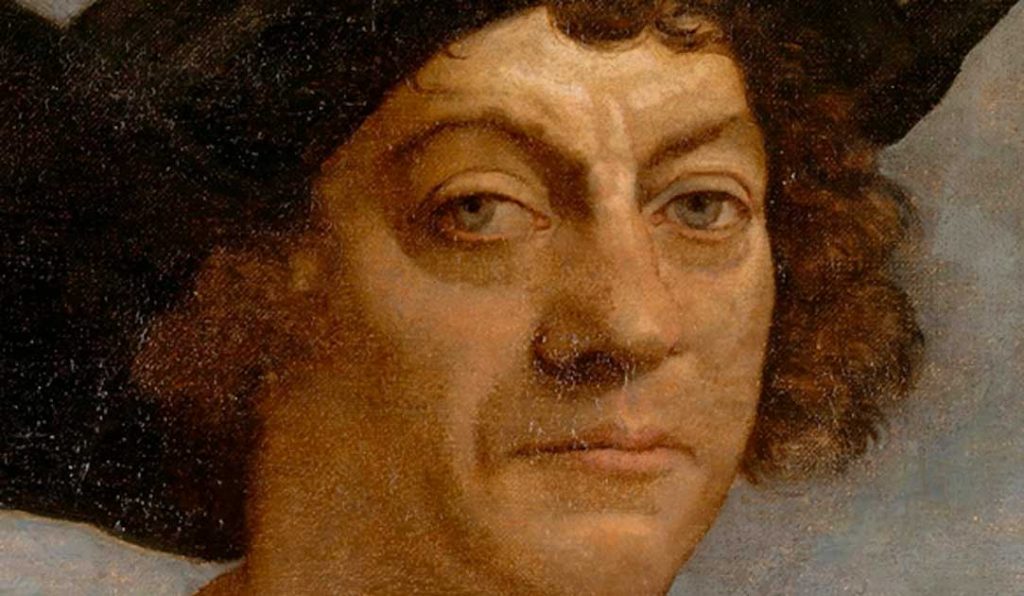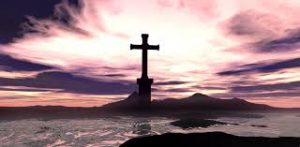Since 1892, when President Benjamin Harrison issued a proclamation urging the nation to mark the day when Christopher Columbus is recorded to have discovered America, the United States has enthusiastically organized school programs, plays, parades, and community-wide festivities across the country. We now celebrate Columbus Day as a day of rest and relaxation. American History, however, fails to teach the true meaning or significance of the man we now honor with a national holiday. For this, we must look back in time to 15th century Spain:
The decree of expulsion read, “By the grace of God, King and Queen of Castile, Leon, Aragon and other dominions of the crown – to the prince Juan, to dukes, marquees, counts, the holy orders, priors, knight commanders, lords of the castles, cavaliers, and to all Jews, men and women of whatever age, and to anyone else this letter may concern – health and grace unto you. You well know that in our dominion, there are certain bad Christians that Judaised and committed apostasy against our Holy Catholic faith, much of it the cause of communications between Jews and Christians. Therefore, in the year 1480, we ordered that the Jews be separated from the cities and towns of our domains and that they be given separate quarters, hoping that by such separation the situation would be remedied. And we ordered that and an Inquisition be established in such domains, and in twelve years it has functioned, the Inquisition has found many guilty persons.”
The Jewish population was already expelled from England, most of France, and most of Germany. The remaining Jews had to identify themselves by wearing a round yellow patch over their heart. Thousands of Jews were slaughtered. Many others “voluntarily” converted to Christianity. The sincerity and religious loyalty of the “new Christians” or Conversos (Marranos) were always suspect. Instead of eliminating persecution, conversion made it worse.
A Sephardic Jew appointed physician and surgeon to the King was their communities’ last hope. Also a mathematician, astronomer, and instructor of the Sagres School of Navigation, Isaac Abrabanel responded to the throne: “Your Majesties, Abraham Senior and I thank you for this opportunity to make our last statement on the behalf of the Jewish communities that we represent. Counts, dukes, and marquees of the court, cavaliers, and ladies… it is no great honor when a Jew is asked to plead for the safety of his people. But it is a greater disgrace when the King and Queen of Castile and Aragon, indeed of all Spain, have to seek their glory in the expulsion of a harmless people. I find it very difficult to understand how every Jewish man, woman, and child can be a threat to the Catholic faith. Very, very strong charges.”
Franciscan friar Alonso de Espina had published a book called the “Fortalitium Fidei,” which listed blood libels, “host degradations,” and a variety of satanic misdeeds allegedly committed by Conversos and Jews. One of his objectives was to show that the Conversos were bad Christians (heretics) and therefore subject to the horrors of the Inquisition.
The pogrom continued, “We further order that no person in our kingdom of whatever station or noble status hide or keep or defend any Jew or Jewess, either publicly or secretly, from the end of July onwards, in their homes or elsewhere in our reign, upon punishment of loss of their belongings, vassals, fortresses, and hereditary privileges. Thus we grant permission to the said Jews and Jewesses to take their goods and belongings out of our reigns, either by sea or by land, with the condition that they not take out either gold or silver or minted money or any other items prohibited by the laws of the kingdom.”
“It is indeed the opposite,” Abrabanel countered. “Did you not admit in this edict to having confined all Jews to restricted quarters and to having limited our legal and social privileges, not to mention forcing us to wear shameful badges? Did you not tax us oppressively? Did you not terrorize us day and night with your diabolical Inquisition? Let me make this matter perfectly clear to all present: I will not allow the voice of Israel to be stilled on this day.”
On March 31, the Edict of Expulsion was signed. Every Jew was forced to choose between conversion to Christianity or leaving the country forever without their possessions. As a final insult, the date of departure was to coincide with Tisha B’Av, a day of mourning to commemorate the many tragedies that have befallen the Jewish people. A day of fast, the destruction of both Temples (the first by the Babylonians in 586 BCE and the second by the Romans in 70 CE) is recorded on that day.
Luis de Santange, a Converso and accountant to the Royal Court, offered Abrabanel the financing of 17,000 ducats to find a new home for the expelled Jewish communities. Abrabanel recruited Abraham Zacuto, the physician for King John II. Like Abrabanel, Abraham was also an astronomer and a mathematician; he had developed the “Almanac Perpetuum,” and included the Tables of Navigation in his native tongue — Hebrew. It was through King John II, that Abraham was introduced to Admiral Salvador Fernando.
Son of Dom Fernando, First Duke of Beja, Salvador who had a love affair with Isabel Goncalves Zarco, daughter of Joao Goncalves Zarco, discoverer of Porto Santo and Madeira. The Zarcos were Portuguese Jews who came from the city of Tomar. When a women became pregnant out of wedlock, she was often secreted away to another locality to give birth to her illegitimate child. For this reason, Salvador Fernando Zarco was born in Cuba, a small town eight miles north of Beja. The couple had one son, Diego.
The power of the Ottomans and other Islamic nations of the eastern Mediterranean was growing at an alarming pace, continually threatening the Christian monarchies themselves. This power had also effectively closed the land routes to the East, via the Caspian Sea, Samarkand, and northern India, and made the sea route south from the Red Sea extremely hard to access.
A first cousin to King John II, Zarco was half-brother to Queen Dona Leonor, half-brother of King Manuel I, and grandnephew of Prince Henry the Navigator. The King arranged for Zarco’s baptism, and as a Converso, was sent on a secret mission to divert Spain’s attention from the real sea route to India by sailing west, giving time for Prince Henry’s navigators to go beyond the Cape of Storms, which was later renamed the Cape of Good Hope. He spent seven years in Spain trying to convince the Spanish royalty to approve a western route to India, each time being turned down.
At a more elevated level still, Franciscan preachers sought to prepare for the end of the world, as they interpreted the Book of Revelations to prophesy. According to the eschatological vision contained in Revelations, Jerusalem would be recaptured by Christendom and a Christian emperor installed in the Holy Land. These events were a precondition for the coming, and defeat, of Antichrist and the conversion of the whole human race and, ultimately, for the Last Judgment.
With the Edict of Expulsion signed, Luis de Santangel, keeper of the royal purse, urged the Crown to approve the expedition in “an enterprise of so little risk, yet which could prove of so great service to God…to speak of very great increase and glory for her realms and crown…” Luis pleaded the westward project would, it was hoped, help to finance a crusade to the East. He suggested the possibility of linking with Christians such as Prester John, a legendary Christian ruler of the East, and his descendants, who, it was thought by many, still survived east of the lands of the infidel.
The Great Khan of the Golden Horde was himself held to be interested in Christianity. Luis made the case that the Kingdom could use the journey to personally deliver a letter of friendship from his sovereigns to the Great Khan on their journey. Finally, the Queen relented and summoned the Admiral who would never take “no” for an answer to return to the Spanish court and lay out his plan again.
In his final presentation to the Queen, Zarco announced, “Your Highnesses, as Catholic Christians… took thought to send me to the said parts of India, to see those princes and peoples and lands… and the manner which should be used to bring about their conversion to our holy faith, and ordained that I should not go by land to the eastward, by which way it was the custom to go, but by way of the west, by which down to this day we do not know certainly that anyone has passed; therefore, having driven out all the Jews from your realms and lordships… I should go to the said parts of India, and for this accorded me great rewards and ennobled me so that from that time henceforth I might style myself “Don” and be high admiral of the Ocean Sea and perpetual Governor of the islands and continent which I should discover… and that my eldest son should succeed to the same position, and so on from generation to generation.”
Despite their shock at hearing of his demands to be appointed “Admiral of the Ocean Sea, Viceroy and Governor of the said islands and mainland,” and the astonishment of the country, surrounding Kingdoms, and the Pope himself, the documents were signed. For a signature, Zarco always used a unique triangular monogram similar to inscriptions found on gravestones of Jewish cemeteries in Spain and South France. This Kabbalistic siglum, in Hebrew, Latin, and Greek, contains two secret names: Cristobal Colon, his “nom de plume,” and Salvador Fernando Zarco, his birth name.
On the 9th of Av, August 3, 1492, Christopher Columbus, as his Converso name is now recorded, departed Palos, Spain at the command of three ships and 90 men, nearly all of his crew Conversos. He carried with him Abraham Zacuto’s Table of Navigation and a book of charts from Isaac Abrabanel. His vessels reached the Canary Islands on August 9th and departed out into the unknown of the Atlantic on September 8th. None of Columbus’ crew had ever sailed over 300 miles from Europe, but by October 12th, covering over 3000, they sighted land in the Island which Columbus named San Salvador. On October 29th, he reached Cuba, naming it after his birthplace.
Columbus’ official report of his first voyage to Ferdinand and Isabella began with the following words: “And thus, having expelled all the Jews from all your kingdoms and dominions…;” a very strange beginning statement for an Admiral returning from a remarkable, supposedly impossible voyage. Even following three subsequent voyages across the Atlantic, Columbus declined to admit that he had not found the true Indies and Cathay which he had searched for. Columbus died refusing to accept that he had discovered a brand new world in the Caribbean.
It is ironic, however, that Ferdinand and Isabella’s attempt to rid the Jews from Spain, ultimately resulted in a new homeland for them called America, a refuge for more Jewish people than anywhere else on Earth. In fact, today the population of Jews living in New York City is greater than in all of Europe combined. As an expert sailor, navigator, and cartographer, and indeed a Kabbalist, who understood the secrets of heavenly bodies, perhaps Salvador Fernando Zarco knew exactly where he was going.














More Stories
How to Be Tactful When You Receive a Gift You Don’t Want
Don’t Tell Me I Can’t Say Merry Christmas
Christmas Season Versus Holiday Season